KOSTEL NAVŠTÍVENÍ PANNY MARIE
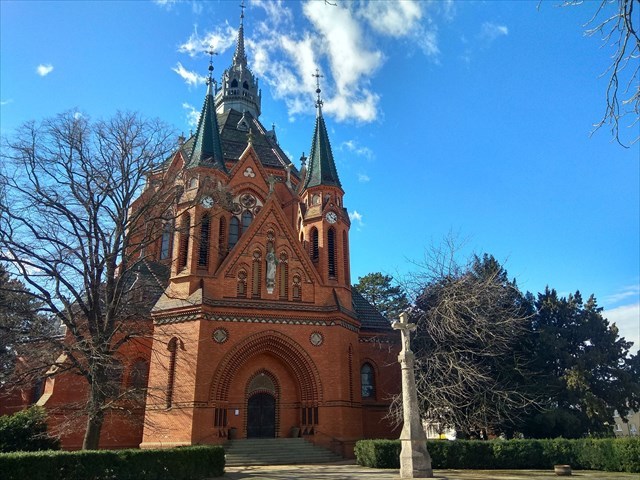
O tomto krásném díle člověka je na netu informací spousta; já zde uvedu jen to, co mi přišlo zajímavé. Čerpal jsem hlavně z informací, které mi poskytla průvodkyně při prohlídce kostela:
Vyhlídka věže kostela Navštívení Panny Marie
Celkem si zde vyšlápnete 188 schodů. Cestou můžete malým okýnkem vidět na hlavní oltář kostela. Zde zvoník sledoval při bohoslužbách pozdvihování. Když nastal správný okamžik, vyběhl pár schodů do sanktusní věžičky a začal zvonit. Dnes už zde zvon není; byl zabaven během války a přetaven. V sanktusní věžičce jej připomíná už jen dřevěná hlava, ke které byl zvon připevněn. Na jiném místě, ve zvonici kostela, jsou čtyři zvony; tři jsou elektrifikované, na jeden se zvoní ručně a říká se mu umíráček.
Cestou vzhůru natrefíte na staré schody, které se už nepoužívají kvůli bezpečnosti a používá se schodů nových. Za nimi je malá expozice původních doplňků stavby. Je zde ale i stará láhev od piva, ještě z Podlužanu, na památku po řemeslnících a vedle jsou klíče, které sloužily při stavbě střechy kostela.
Když vystoupáte ještě výš a střecha se k vám přiblíží, můžete si všimnout, že jsou zde nové střešní tašky s nápisem Krytina Hranice, takže už nejenom Poštorenské Keramické Závody (knížecí keramické závody)…
Další zajímavostí je komín, který vede ze sakristie; protože v kostele umí být kolem nuly v zimním období. Dnes jsou topidla pod lavicemi, převážně v předních řadách. Komín nebývá běžnou součástí stavby kostela a tady se už nepoužívá.
Nad hlavní klenbou kostela z cihel (je vysoká 25 metrů) je zařízení pro otáčení pozlaceného lustru při jeho údržbě. Bývá spouštěn do výšky 8 metrů.
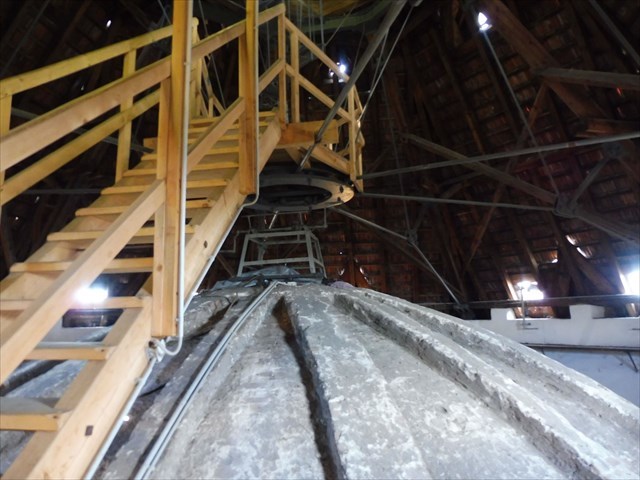
Z vyhlídky je vidět například Minaret v Lednici, Apollónův chrám, zámek Lednice, Pálava, Rakousko s větrnými mlýny; je to tu fest placaté, tak bych měl asi napsat kam vidět není... Když se na vyhlídce postavím směrem k východu z kostela, tak po pravé straně je dřívější německá škola – nyní ZŠ druhý stupeň a naproti vchodu do kostela, přes ulici dřívější česká škola, nyní je tam knihovna. A vlevo je fara.
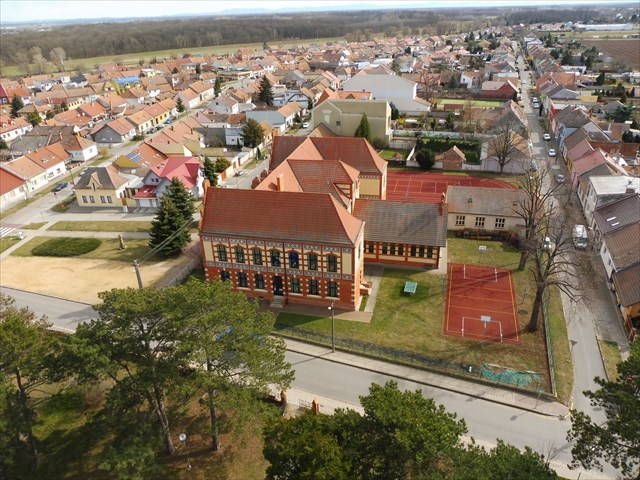
Kostel
Základní kámen byl položen 24.4 1895 a 3.7.1898 byl vysvěcen (každoroční slavnostní bohoslužba).
Dle farní kroniky stál původní kostel (1339) na místě kříže, který je před kostelem. Po určitý krátký čas stály oba kostely vedle sebe; po vysvěcení nového byl starý zbořen. Údajně byly cihly z původního kostela použity na stavbu chudobince; dnes pension U Michlů (dříve na Kozí ulici).
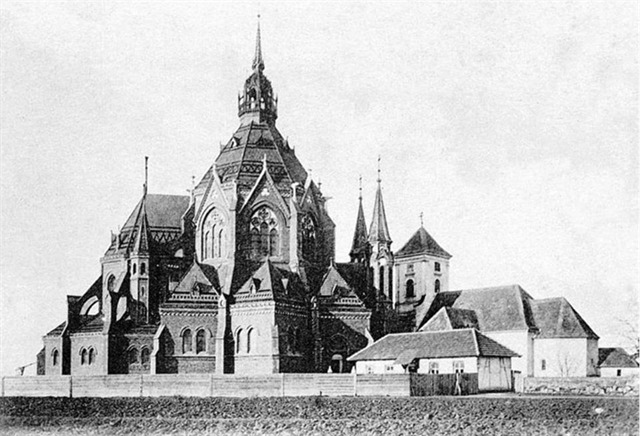
Za vstupem do kostela je strop, který je zdoben vinnou révou. Vlevo je kazatelna, ze které se dřív kázalo, ale dnes se z ní už do duší nepromlouvá. Zajímavostí je i křtitelnice, která je velmi mohutná a zvedá se pomocí kladkostroje.
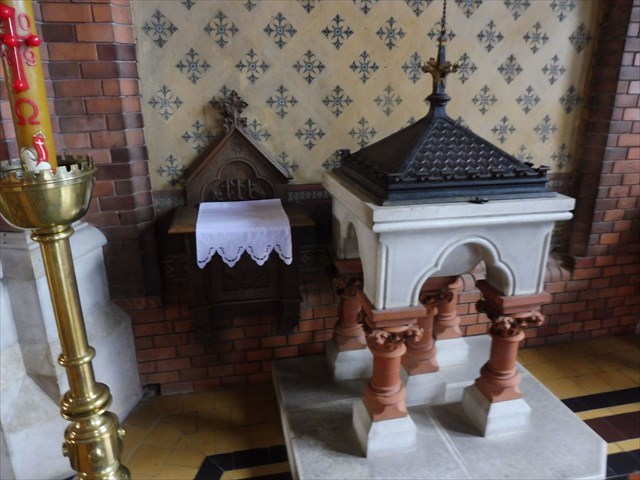
V kostele se opakuje motiv 3 erbů. Levý patří Poštorné, prostřední patří Lichtesteinům a pravý Charvátské nové vsi. Kostel má výbornou akustiku a pořádají se zde koncerty. Jsou zde nádherné vitráže a krásná, původní podlaha.
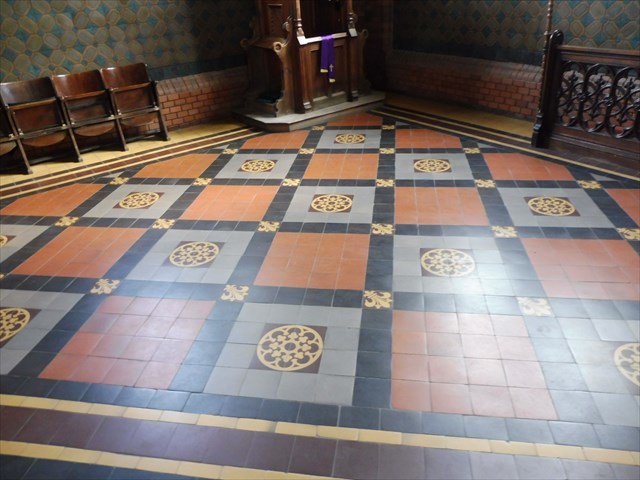
Za kostelem a částečně i na místě, kde kostel stojí, býval kdysi hřbitov a v Poštorné se vykládá, že pod podlahou kněžiště leží pochovaná šohajka v místním kroji. Při kopání základů pro oltář objevili zedníci nepoškozenou rakev i s dívkou v takovém stavu, jako by byla pochována předešlého dne. Po tomto nálezu se rozběhlo pátrání; protože se však k nalezené dívce nikdo nehlásil, dělníci nechali rakev na svém místě a zakvelbili ji. Teprve nad tímto kvelbem postavili základy pro hlavní oltář.
Ve středu kněžiště je hlavní oltář, který nebyl nikdy dokončen. Traduje se, že nějaký Maďar utekl s jeho plány a oltář tak nebylo možné dokončit.
Zajímavostí je i to, že v kostele vždy sedí poštorenští vlevo a věřící z Charvátské Nové Vsi vpravo. Možná stejně, jak jsou vedle sebe uspořádány 3 erby. Kupodivu je část pro poštorany menší o lavice, místo kterých zde stojí kazatelna. Na poštorenské straně je i méně oltářů.
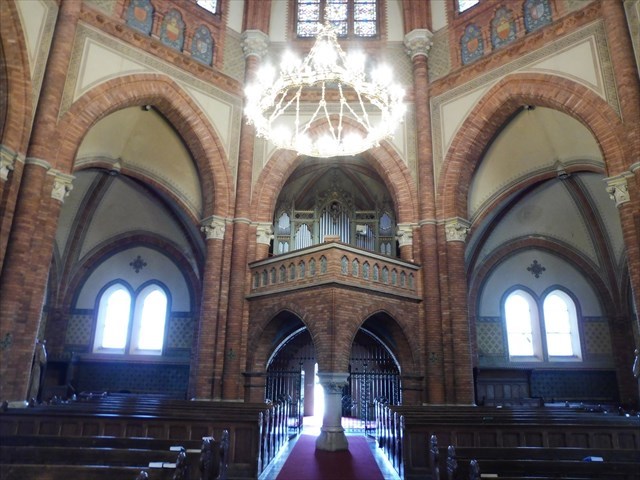
Hlavní průčelí poštorenského kostela je obráceno k vyústění břeclavské cesty. To podnítilo orientaci kněžiště netradičně směrem na jihozápad (běžně jsou kostely orientovány na východ).
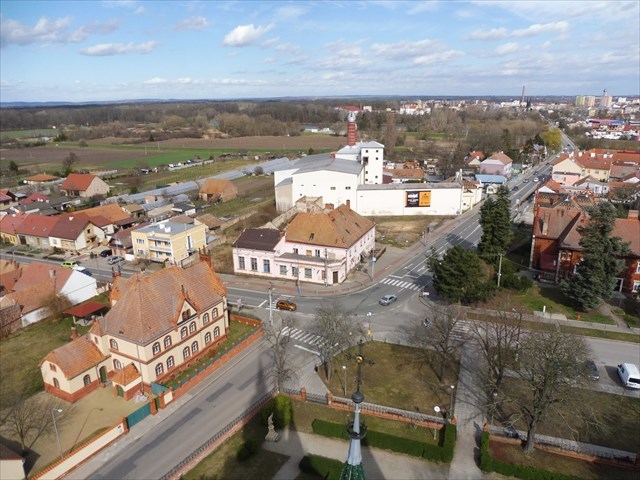
Letos (2020) bude mít kostel 122 let, a přitom zvenčí vypadá jako nový. Na stavbu kostela bylo použito přes 200 druhů cihel, dlaždic a glazované keramické krytiny z místních knížecích keramických závodů (dnes Poštorenské keramické závody); některé byly i vícekrát vypalované, proto vypadají pořád tak hezky.
Na facebooku (Paměť Podluží - Mladý vlastivědný klub) jsem se dokonce v jednom z příspěvků dočetl, že kostel měl snad sloužit také jako vzorník produktů knížecí cihelny. Zákazník si v kostele vybral a následně objednával.
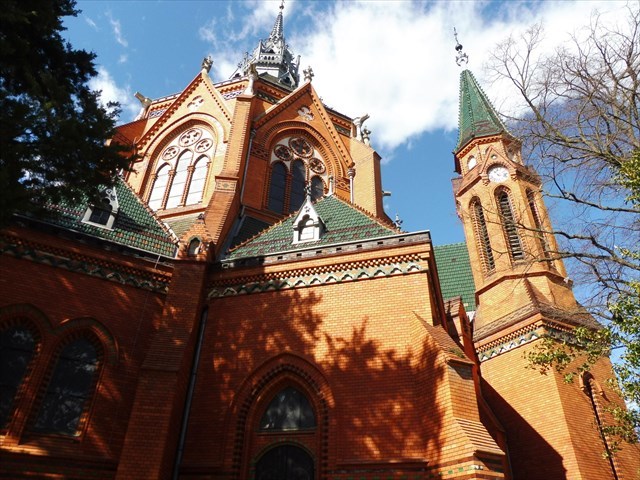
Ovšem ani tento kostel není bez problémů. Na klenbách je bohužel vidět, jak oprýskává omítka, jsou zde vlhká místa a někde se objevuje i plíseň. Člověka, který zná kostel jen zvenčí, toto dost překvapí. Podle průvodkyně se uvažuje o sbírce na opravu kostela. Ale od myšlenky k realizaci je ještě dlouhá cesta, tak jen držím palce, aby se krásnému kostelu dostalo patřičné péče.

Z významných návštěv uvádím prapravnučku Karla Weinbrennera, architekta kostela, která se přijela podívat i s rodinou z New Jersey na všechny stavby tohoto architekta. Velkou událostí byla rovněž i návštěva Lichtensteinů u příležitosti 120. výročí kostela.
Pro uznání logu je třeba splnit tuto podmínku:
Ke svému logu přidej fotografii sebe nebo své GPS (nebo svého CWG) s kostelem v pozadí.
Pokud se někdo vydá i do kostela, budu rád i za fotky ze vnitř.
Logy bez přiložených fotografií budou smazány!
Děkuji neteři Míši (vlczech.studio) za překlad textu.
I thank my niece Michaela (vlczech.studio) for the translation of the text.
 ... There is plenty of information about this beautiful creation of mankind. However, I am going to show you what seemed interesting to me. The main source of information was given to me during my view of the church by the tourist guide.
... There is plenty of information about this beautiful creation of mankind. However, I am going to show you what seemed interesting to me. The main source of information was given to me during my view of the church by the tourist guide.
Observation tower at the church of the Visitation of the Virgin Mary
You will climb 188 stairs in total here.
You can see the main church altar through the small window on the way up. Bell-ringer used to observe elevation from this place. When the right time came, he climbed a few stairs leading to Sanctus turret where he started ringing the bell. There is no any bell-ring anymore, it has been seized and over-melted during the World War II. Only a wooden head left in the Sanctus turret to which was the ring-bell fixed. There are four other ring-bells at another place in the belfry of the church. Three of them are electrified and one of them is used manually and it is called passing-bell.
On the way up, you are going to run across the old stairs which are not used for safety so you can use new stairs only. There is a little display of the original supplements of the construction behind the stairs. You can find here an old bottle of Podlužan beer, in memory of craftsmen. You might see keys next to it which were used for the church roof construction.
If you climb even higher and as the roof gets closer to you, you can see new roof tiles with the name Krytina Hranice on them. So not only Poštorná Ceramic manufacture has taken part in this project...
Another interesting curiosity is a chimney that leads from the Sacristy because the temperature can be around 0 degrees Celsius here during the winter period. In the front rows mainly, there are heating under the benches. The chimney is not a common part of the church structure and it is not used here anymore.
Above the main vaulting of the church from the bricks (high of 25 meters), there is a device for rotation of the gilded chandelier for its maintenance. It is usually pulled to a high of 8 meters.
Minaret in Lednice, Temple of Apollo, Castle Lednice, Pálava, Austria’s Wind Power Plants are places that can be seen from the view. It is so flat here so I should rather write what you cannot see…
When I stand up towards the church’s exit, I can see a building on the right side which was a German school in the past. Nowadays, this place is used for the second level of a primary school. Opposite the entrance of the church across the street, there is a library which used to be a Czech school. On the left side, there is a rectory.
The Church
The foundation stone was placed on the 24th of April 1895 and sainted on the 3rd of July 1898.
As per the rectory’s chronicle, there was an original Church (1339) built at the place where the Cross stands. The Cross is located in front of the Church. For a certain short period, those two churches used to stand next to each other. When the new church was sainted, the old one was immediately demolished. Supposedly, the bricks from the old church have been used for the construction of the new poorhouse. Currently, this place is used for the pension called “U Michlů”.
There is a ceiling behind the church's entrance which is decorated with Grapevine ornament. The pulpit is located on the left side which is not used anymore. The baptistery is another example of curiosity. This heavy and monumental baptistery is lifted by the hoist.
There is a repetition of the motif of the three blazons. The left one belongs to Poštorná, the middle-one is for Lichtenstein and the right blazon belongs to Charvátská Nová Ves. The church has a great acoustic quality and many concerts are held here. There are magnificent vitrages and fascinating original flooring.
There used to be a cemetery behind the church and partly on the place where the church stands. It is said there is a body of a young girl dressed in the folk costume buried under the chancel’s floor. Bricklayer found the untouched coffin of the girl during the digging of the altar's foundation. The body looked like it was buried just one day ago. Immediately after this finding, a new investigation has started. As they did not find more about this case, the labourers left the coffin at the same place where they found it and built the foundation for the main altar there.
The main altar stands in the middle of the chancel. This altar was never finished. There might be one explanation - it is said that one Hungarian man ran away with the altar's plan so it could not be ever finished.
Interestingly, people from Poštorná sit on the left side in the church and the residents of Charvátská Nová Ves sit on the right side. They might copy the organisation of the three blazons. Curiously enough, the part which is for residents of Poštorná is shorter as pulpit stands here. On this side is the fewer amount of altars as well.
The main frontage of the Poštorná church is turned to the outcome of the road of Břeclav. That was a reason for the uncommon orientation of the chancel to the southwest direction (as churches are usually oriented to the east).
This year (2020) is the church going to turn 122 years even though the church looks like brand new from the outside. Over 200 types of bricks, tiles and glazed ceramic roofing from the local Duke's ceramic manufacture (today known as Poštorná ceramic manufacture) were used for the church construction. Some of the ceramic roofing tiles were repetitively fired - that is the reason why they still look so great.
One article of the Facebook page “Pamět Podluží - Mladý vlastivědný klub” says that church could potentially be used as a sampler of Duke's brickyard products. The customer could come and chose and order the right type of brick from there.
Of course, even this church is not without any issue. You can see peeling plaster on the vaulting. There are dumped places and some hiding mould as well. It might be surprising for someone who knows the church just from the outside. Said by the tourist guide, there might be founded new fundraising to repair the church. However, the journey from the initial thought to the final realisation is still quite long. I wish the church will get the needed care as it deserves - fingers crossed.
I would like to mention one example of the significant visitor - the reat-granddaughter of Karel Weinbrenner (the architect of the church). She came with her family from New Jersey to visit and see all the projects by this architect. Another amazing event that is worth mentioning is the Lichtensteins' visit to the event of the 120th anniversary of the church of the Visitation of the Virgin Mary church.
To acknowledge the log, the following condition has to be met:
Add a photo of yourself or of your GPS (or your CWG) with the church capted in the background.
Logs without any photos attached will be deleted!
Virtual Rewards 2.0 - 2019/2020
This Virtual Cache is part of a limited release of Virtuals created between June 4, 2019 and June 4, 2020. Only 4,000 cache owners were given the opportunity to hide a Virtual Cache. Learn more about Virtual Rewards 2.0 on the Geocaching Blog.